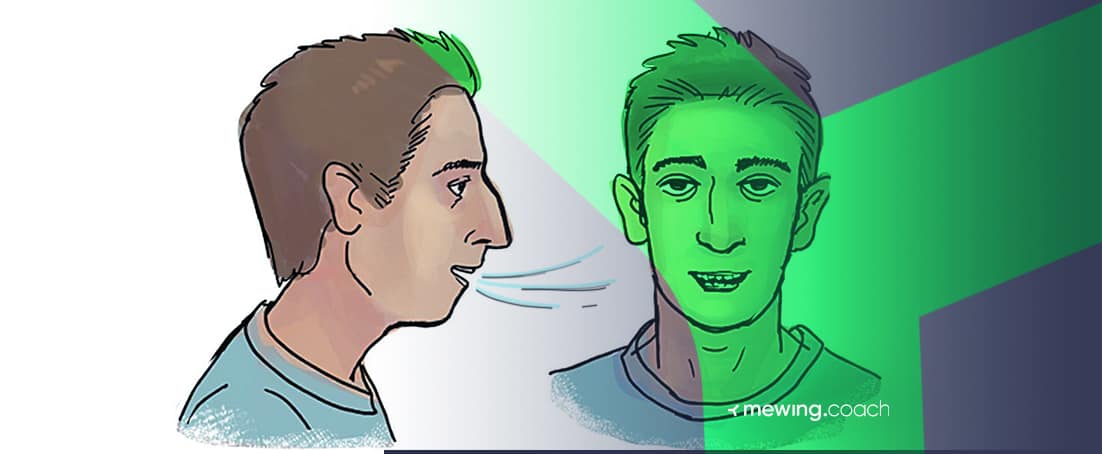
A long face does not always look good in photographs. All face types are beautiful, no matter how round or square they appear, but an elongated face is not the most liked, resulting from years of mouth breathing.
Having a long face and long face syndrome differ from one another. One can say you have a long face due to a sad facial expression, but long face syndrome causes medical issues with nose breathing, sleep apnea, and eating.
Having a long, narrow face does not necessarily mean having long face syndrome. Some people simply have that particular skull structure. Those with the syndrome have a medical condition called the long face syndrome or mouth breathing face. Corrective treatments like orthodontics, dental work, braces, and surgery can fix this condition.
Give this article a read to learn:
- 📝 What is long face syndrome?
- 🤔 How to diagnose long face syndrome?
- 🔍 What are some of the natural treatments you can employ?
What is Long Face Syndrome/Mouth Breathing Face?
The medical term for long face syndrome is facial hyper divergence. This medical condition is characterized by a long, narrow face that obstructs daily activities like sleeping, breathing, eating, and more.
Besides being recognized as a long narrow face, this syndrome is also called an adenoid face or adenoid hypertrophy face. You will be able to distinguish long face syndrome from a regular long face by noticing the lower third of the face. If the chin and jaw bone is lower and longer than usual, then it’s probably the long face syndrome.
Besides adding to negative facial aesthetics, long face syndrome causes many medical problems. Because it inflicts the lower jaw, the long face syndrome can cause dental abnormalities, such as:
- open bite
- malocclusion
- broken teeth
- jaw misalignment
- crowded teeth
- obstructive sleep apnea
- nasal obstruction
- snoring, fatigue
- psychological distress
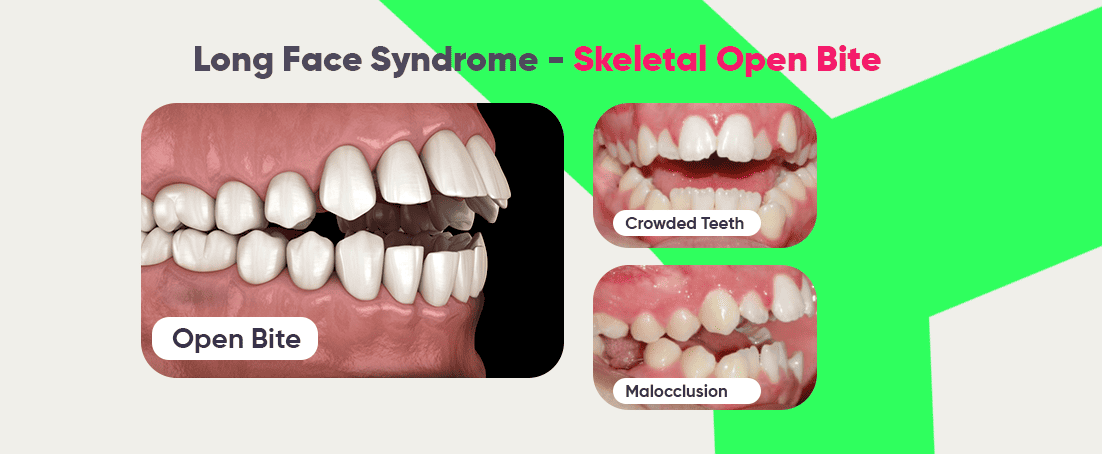
An elongated face syndrome is one of those facial features that aren’t flattering to most, accompanied by drooping, dark circles under the eyes. An adenoid face is also recognizable when the person smiles and their upper gums are easily noticeable.
Some people go through their whole life not knowing they have long face syndrome because the symptoms are very easy to ignore. Many patients already struggle with two or more of the mentioned problems before doctors can diagnose long face syndrome.
Elongated Face Symptoms
Diagnosing long face syndrome can be difficult for the naked eye. If you or someone you know has long face syndrome, it’s a good idea to consult a medical professional.
The right doctor that can identify adenoid face symptoms is usually a dentist. Long face syndrome can also be seen in children. A medical professional would be able to guess that the child will develop long face syndrome if they breathe through their mouth and have a misaligned jaw. The patient will also have a “gummy smile,” meaning their gums will be visible every time they smile.
Besides kids, long face syndrome also attacks adults. They don’t notice it until they go through a dental condition diagnosis or they struggle with sleep apnea. If your doctor suspects long face syndrome, they will study your facial features, measure them and perform an X-ray. If the measurements don’t add up, you might get diagnosed with long face syndrome.
You can tell if you have long face syndrome if:
- Your lower jaw is droopy
- You have a very prominent, pointy chin
- You often catch yourself breathing through the mouth
- You have a gingival smile
- You snore or have sleep apnea
Adenoid Face Causes
Various factors cause long face syndrome, but incorrect breathing is the major culprit. You should be aware of some of the causes of the adenoid face.
Mouth Breathing
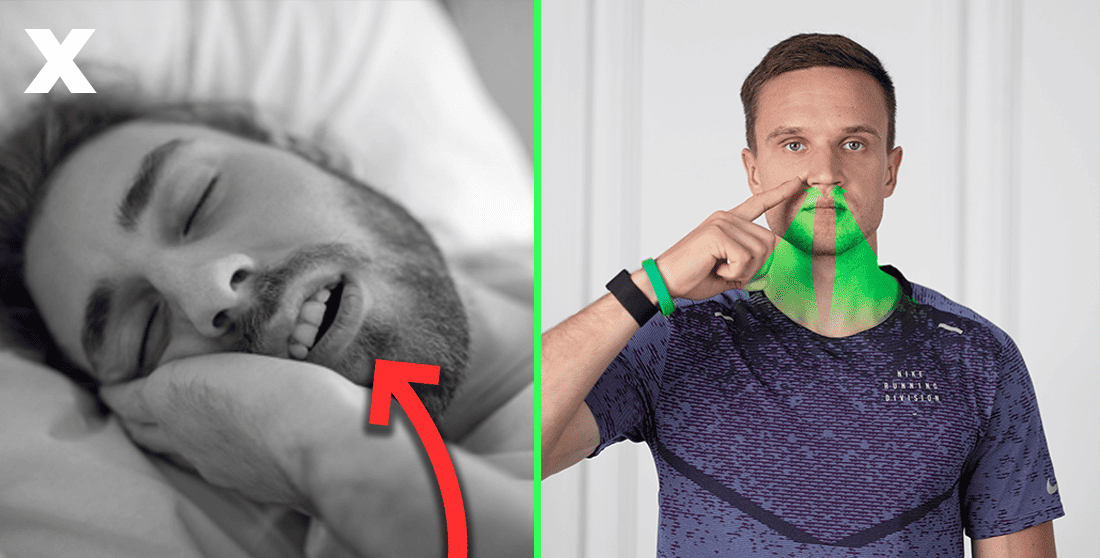
Breathing through your mouth could impact how your face develops, for which you might need surgical treatments. Almost all chronic mouth breathers are susceptible to long face syndrome because they breathe through the wrong passageway. Breathe through the nose at all times, except when you have a stuffy nose. To stop mouth breathing, you must practice nasal breathing all the time. This is the best way to correct long face syndrome if the damage isn’t irreparable.
You are wasting your nasal passageways and breathing in various bacteria and viruses from the air. The nose has hairs that can protect it from harm, while the mouth does not. Mouth breathing impairs your facial growth by pulling the jaw downwards while the tongue pushes the bottom teeth forward.
Thumb Sucking
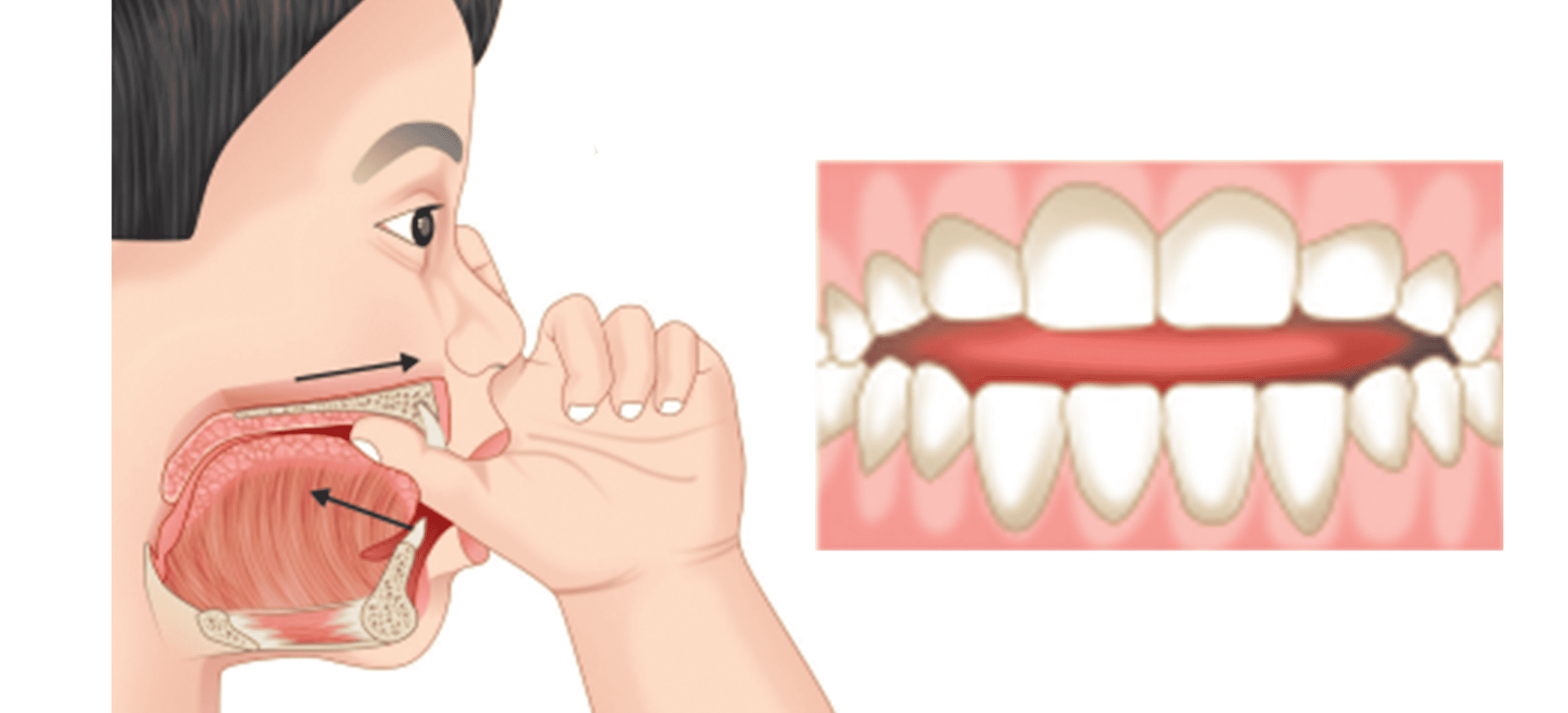
Thumb sucking is the number one cause that can lead to a long face syndrome diagnosis. Constant thumb-sucking during childhood and teenage years can cause a narrow face. By sucking the thumb, you also push your upper teeth backward, exposing more gums.
Thumb sucking also stretches the face and puts stress on the upper jaw. The habit also causes lip incompetence or a small lip. Thumb sucking and mouth breathing are reasons for a vertical maxillary excess or a “gummy smile” and long face syndrome.
Enlarged Adenoids
Sometimes a long face syndrome can be caused by enlarged adenoids. Adenoids are the tissues at the back of your nose, and if they are enlarged, you can’t breathe properly through the nose. This leads to mouth breathing, the main cause of an elongated face.
They also flare up the sinuses, making you appear more wrinkly. If you are wondering how to naturally fix the fine lines that appear on the corners of the mouth, try facial breathing exercises.
Nasal Congestion
If your nose is always congested for whatever reason, you have no solution but to breathe through your mouth. Usually, people with a stuffy nose get sick easily or have a substance problem.
Genetic Condition
Long face syndrome can sometimes be a result of genetics. This particular facial structure passes down through generations. If one of your parents had an elongated face, there’s a great chance you might inherit it as well. The same goes for nasal obstruction problems and enlarged adenoids.
How To Perform Long Face Syndrome Correction: Solutions
Being diagnosed with long face syndrome doesn’t necessarily mean immediate surgery. If the problem is detected during childhood, you can correct it before it gets too severe. Besides orthognathic surgery and braces, there are natural ways to treat an adenoid face. Here are some solutions to dealing with long face syndrome.
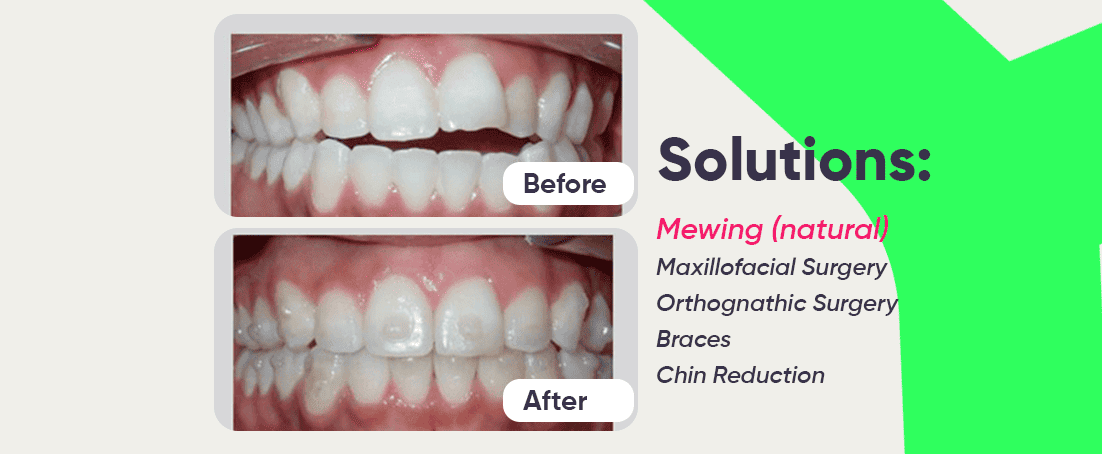
Maxillofacial Surgery
Maxillofacial surgery is a corrective surgery treatment done to the face, jaw, or mouth. It’s a special branch of dentistry involving an operation to correct injuries, defects, or diseases of the lower third of the face.
Maxillofacial surgeries include reconstructive face surgery, facial trauma surgery, and surgery on the oral cavity head, neck, and jaws. It can also help with plastic reconstructive surgery of a cleft lip, cleft palate, etc.
This type of surgery can help long face syndrome suffering patients with proper jaw alignment. The maxillofacial treatment is successful in most cases, but it’s costly.
Orthognathic Surgery
Before getting surgery, your dentist will perform a panoramic radiograph to examine your jaw closely. If they detect any craniofacial abnormalities, they will most likely want to see the extent of the damage. A certified dentist will then perform a cephalometric analysis to elaborate on the relationship between the dental and skeletal parts of the human skull. After this is done, you will probably wear braces and prepare for surgery.
Orthognathic surgical treatments are performed with the surgeon using small screws and wires to secure the chin. They also reposition your jaw to reshape your jawbone, making it smaller to fit better in the mouth. Orthognathic surgery is recommended if you have a skeletal open bite or other skeletal abnormalities.
Braces
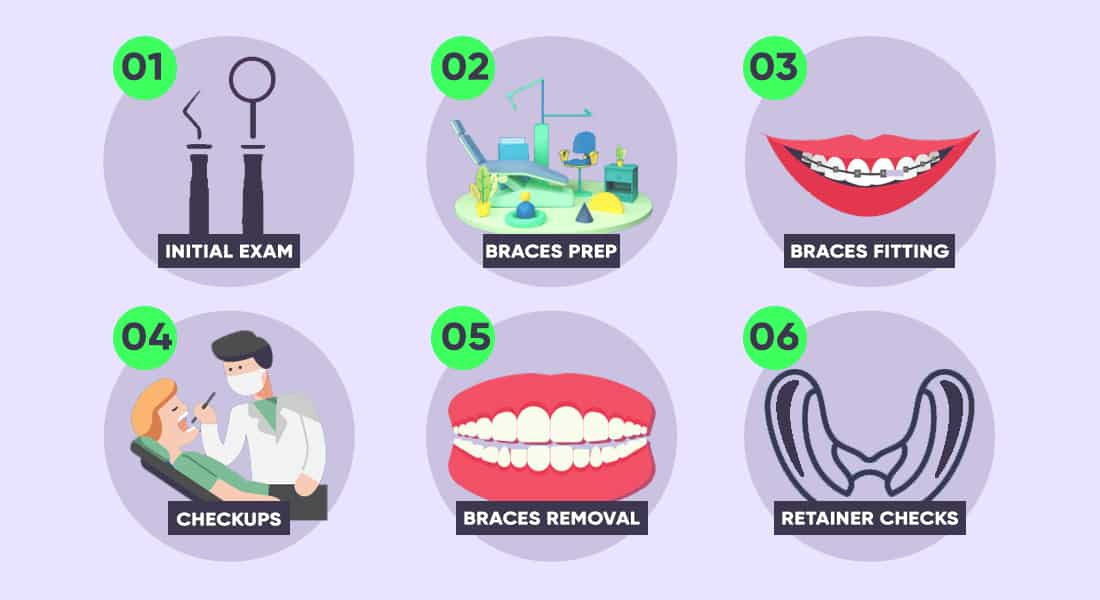
Before getting orthognathic surgery, you may need to wear braces for a couple of months to see if it fixes the problem. Sometimes, if the long face syndrome is recognized at an early age, braces can fix the elongated face. Braces will put your jaw and place your teeth in the right position, so you don’t struggle with dental occlusion. But, if the long face syndrome is noticed much later, surgery might be necessary.
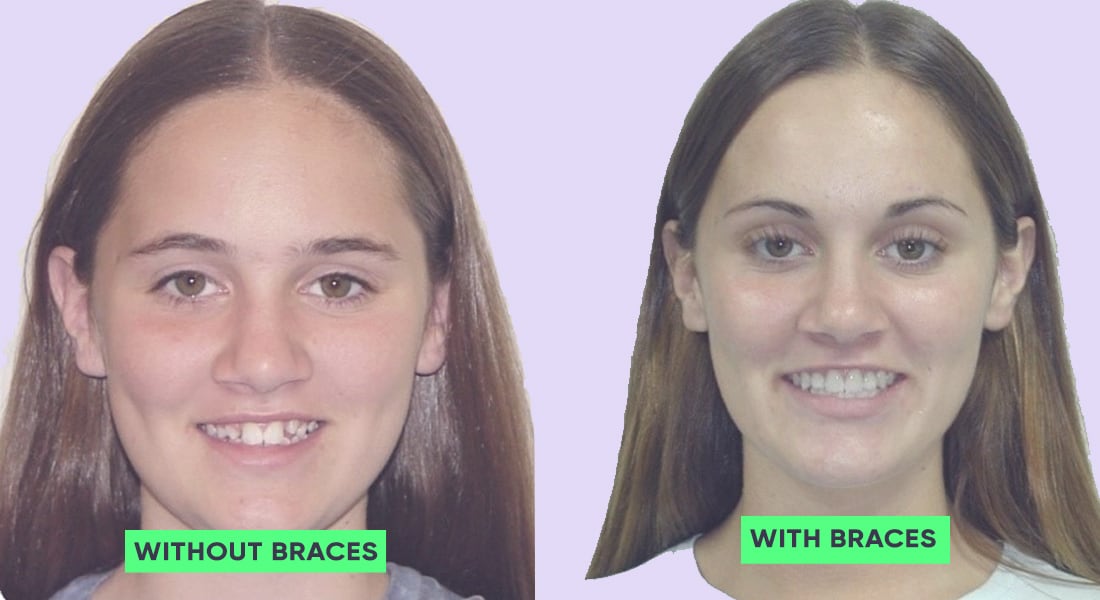
Other Dental Work
If you are not willing to undergo surgery, you can have minor dental work done. This includes small procedures like tooth reshaping, implants, crowns, and braces.
Chin Reduction
Sometimes a long face can appear due to a lack of elasticity in the skin. If you are wondering how to regain facial skin elasticity, you can try plastic or aesthetic surgery. Another way to fix a long face syndrome is through fillers or a chin reduction. A specialized surgeon will shave a part of your chin bone and sow it up.
Facial Breathing Exercises
Since mouth breathing is the predominant cause of the long face syndrome, you can fix it or prevent it by doing simple breathing facial exercises. You know the nose breathing benefits, but if you combine it with proper jaw and tongue alignment, you can reduce the appearance of an elongated face.
By slowly breathing, keeping the teeth perfectly aligned, and placing the tongue against the roof of your mouth, you can give your face symmetry, structure, and volume where necessary. This act is called mewing, and mewing improves the appearance of your jaw and sculpts your face.
You need to know how to mew correctly, and if you don’t know where to start, check out the Mewing.coach app! Before deciding to “go under the knife,” try mewing exercises to treat the problem naturally!
Final Word
Long face syndrome is a treatable condition if it’s encountered in time. If you notice that you or someone you know has poor oral habits or your child sucks their thumb, it’s best to advise them against it. Any indication of facial pain is also a cause for alarm as it could result in temporomandibular joint disorder (TMD), a disorder in the jaw muscles.
Those stuck with long face syndrome can always try the following treatments: braces, orthognathic surgery, implants, or opt for more natural ways like mewing!
Sometimes doing something as little as facial breathing exercises can give structure to your face. Say goodbye to self-consciousness and hello to a newly sculpted face!




